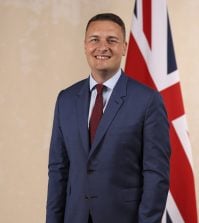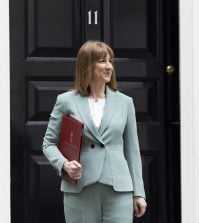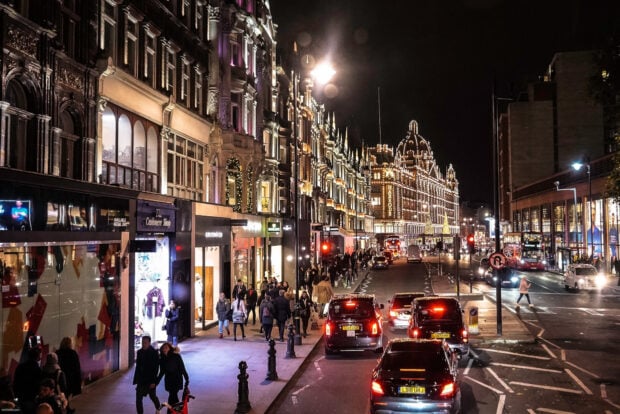Whither Brexit? Explaining the UK’s political chaos

An attempt to unseat the prime minister. Deadlock between government and Parliament. A hopelessly fragmented House of Commons. What on earth has happened to Britain’s normally-pragmatic politicians – and where does Brexit go from here? Matt Ross explores the UK’s predicament
UK prime minister Theresa May this week survived an attempt by Conservative MPs to unseat her as party leader, and has resumed her apparently hopeless search to wrangle further concessions out of the European Union in a bid to win Parliamentary backing for her Withdrawal Agreement (WA) deal.
Brexiteer members of May’s party attempted to depose the PM following her last-minute decision – after three days of Parliamentary debate on the deal – to postpone the planned Commons vote in the face of inevitable defeat. And the rebels, coordinated by the European Reform Group (ERG) of MPs, found more support than expected for their ‘no confidence’ move, securing 117 votes against the PM’s 200.
As Huffpost’s Paul Waugh told the BBC after the Tuesday evening poll, the “payroll vote” of ministers, party vice-chairs and trade envoys – who would be expected to back the PM in the secret poll – runs to 178 MPs, suggesting that a large majority of Tory backbenchers have no confidence in their leader. Nonetheless, May is determined to go on. So where is she going? And is she likely to get there?
Seeking Commons approval
May has been weakened by the Tory rebellion – not only through its exposure of her slender Parliamentary support, but also by her last-minute pledge to quit before the general election scheduled for 2022. It has been clear ever since May’s disastrous decision to hold a snap general election in May 2017 – resulting in the loss of 30 Conservative MPs, and the party’s Commons majority – that she would not be allowed to take the party into the next general election. But by openly acknowledging that fact, May has opened the door to a long period of speculation about her successor and jockeying for position amongst would-be leaders.
Following the no confidence vote, May has returned to Europe for talks with European leaders. The PM hopes to sweeten the pill of the Brexit deal, in the hope of getting it through the Commons: under legislation passed in June, she has until 21 January to bring her deal back to the House.
The WA disentangles the UK-EU relationship, deciding key matters such as citizen’s rights and budgetary contributions, and allows for a so-called ‘implementation period’ running to the end of 2020; this could be extended to the end of 2022 on request.
During this period, the UK would no longer be an EU member and would lose its voting and participation rights, but would otherwise continue in its existing relationships with the EU – allowing people on both sides to prepare for the transition to a final trade agreement. A ‘political declaration’ accompanying the WA includes warm words on both sides’ determination to successfully agree this trade deal, but this is merely a statement of intent and has no legal force.
The trade agreement would, in theory, be negotiated during the ‘implementation period’ – which is, in reality, a negotiation period. However, before coming into force it would need to be ratified by every EU member’s legislatures. And given both the lengthy negotiations required to broker previous EU trade deals, and the Tory party splits which so delayed progress on the WA, few believe that it could be settled by December 2022.
The notorious backstop
Hence the WA’s provisions for a ‘backstop’, which the UK would enter automatically if the future trade deal had not been ratified by the end of the implementation period. And whilst nobody pretends that the WA offers better terms than the UK currently enjoys with the EU – even the deal’s defenders only build their arguments around the need to respect the result of the 2016 referendum – the backstop is, to put it mildly, highly disadvantageous for the UK.
It is required because of the need to maintain an open border on the island of Ireland – respecting the terms of the 1998 Good Friday Agreement which helped end the Troubles, avoiding economic disruption, and maintaining the rights of Northern Ireland’s republican and Catholic communities. Without a backstop, then if no trade deal could be agreed by 2022 the whole UK would leave the EU’s Single Market and Customs Union. This would lead to the imposition of a ‘hard border’ between Northern Ireland and the Republic, requiring physical infrastructure that would contravene the Good Friday Agreement and threaten the return of civil unrest to the province.
Brexiteers have consistently argued that the UK-EU trade deal could introduce technologies to monitor cross-border movements, permitting the UK to sign future trade agreements with non-EU nations – and thus introduce a tariff boundary along the 140-mile border – whilst ensuring the absence of physical infrastructure. However, few believe that this technology will exist anytime soon: it is the single biggest ‘unicorn’ amongst the dubious solutions on which so many of the hard Brexiteers’ arguments rest.
So the backstop exists to give the EU confidence that, until it and the UK can sign a trade deal protecting Ireland’s open border – either through Northern Ireland remaining in the Single Market and Customs Union, or by corralling and harnessing that unicorn – there will be no significant regulatory or tariff boundary between Northern Ireland and the Republic.

Worst of all worlds
Under the backstop, the whole of the UK would remain aligned to the Customs Union – required to mirror its tariffs regime for imports, even if they change as the EU signs future trade deals with third party countries. The British Isles would also remain aligned to EU competition and state aid rules, and would retain existing environmental, social and workers rights – though here it might diverge if EU rules change in future.
Northern Ireland, however, would be more closely tied to the EU – retaining alignment for regulatory rules on goods. So if EU – and thus Northern Ireland – goods regulations changed and Britain chose not to follow suit, a regulatory border would appear between Britain and Northern Ireland. This is anathema to Northern Ireland’s Democratic Unionist Party, who fiercely oppose any schism within the United Kingdom. And since May’s botched 2007 election, her Commons majority has rested on a ‘confidence and supply’ agreement with the DUP’s 10 MPs – giving them enormous leverage in Westminster.
Crucially, the UK could not leave the backstop without the EU’s permission: the EU would have to be content that any future trading arrangement would retain the integrity of the EU’s Customs Union border without the need for physical infrastructure. This is, of course, quite the opposite of ‘taking back control’, and is unacceptable to many MPs – particularly the Brexiteers.
Another key objection to the backstop is that, with the whole of the UK observing the Customs Union tariff regime, the government would effectively lose its ability to sign trade deals with third countries – one of the biggest supposed benefits of Brexit. For the UK could not offer to reduce its own tariffs, leaving it little to put on the table in any trade talks.
What’s more, if the EU signed trade deals with third countries, the UK would be required to respect the reduced tariffs offered to the EU’s negotiating partner but would not – as a non-member of the EU – be able to take advantage of tariff reductions offered by the third country. The backstop is not just a straight jacket preventing the UK from signing trade deals: it would leave the UK an unwilling passenger in any future EU trade deal, required to forego tariff revenue and permit cheaper imports but denied the ability to agree tariff cuts for its own exporters.
‘Taking back control’
Other poison pills lie scattered across the WA, including one concerning the power of the European Court of Justice (ECJ). Promising to “take back control of our laws, our borders and our money”, the PM has pledged to give UK courts primacy above the ECJ. And under the WA, any disputes over the operation of the Withdrawal Agreement would be resolved by an independent arbitral tribunal.
However, where the dispute requires the interpretation of aspects of EU law – which, in the context, is likely to be most of them – the tribunal is required to pass decisions back to the ECJ and to respect its decision. On this point, May has secured only a fig leaf – and one about the size of a pine needle.
So the backstop is considered unacceptable by the DUP because it could create a split between Northern Ireland and Britain. And the Brexiteers hate much of the WA, particularly the dispute resolution arrangements and the backstop – which they regard, accurately, as a prison: the UK would be unable to realise almost any of the touted benefits of Brexit unless and until the EU was content that the Irish border was safely patrolled by technological unicorns.
The ERG may talk confidently of technology as a solution to the border issue, but their hypo-allergenic reaction to the backstop suggests that they have little more faith in their unicorns than more grounded observers. Similarly, whilst they have long talked up the ease of agreeing a trade deal with the EU, their actions betray a belief that it could not in reality be ratified before the UK slipped into the backstop.
In search of more fig leafs
Hence May’s renewed tour of European leaders. For under the WA, the UK would lose most of the advantages of EU membership – ensuring opposition from Remainer MPs. But it would be unable to realise any of the supposed trade benefits of Brexit until the EU confirmed that an agreed UK-EU trade deal would ensure an infrastructure-free Irish border. Many Tory MPs have pledged to support the deal, arguing that it’s the only way to respect the referendum result. But given the opposition of the DUP, the ERG and Tory Remainers, the minority Tory administration has – even given the backing of a few Labour rebels – almost no chance of getting its deal through the Commons at this point.
However, EU leaders have always been clear that they won’t reopen talks on the WA – offering only changes to the wording of the non-binding political declaration, which outlines the EU and UK’s ambitions for a future trade deal. On the key point – the UK’s requirement to remain within the backstop until released by the EU – May’s European interlocutors will not budge; for a backstop that the UK could choose to exit unilaterally is not a backstop at all.
So May is likely to return from her Continental travels bearing only some rather wilted fig leafs. In reality, her decision to pull the Commons vote and return to Europe probably has more to do with running down the clock than securing substantive concessions. The government believes that increasing the time pressure on the Commons will force more MPs to back the deal, in order to avoid a chaotic ‘no deal’ exit – the inevitable consequence if by 29 March 2019 the UK has not either agreed the deal, or secured a withdrawal or rescindment of the Article 50 notification by which it began the Brexit process.
As I argued last month, I believe that the Brexiteer opposition to May’s deal is softer than it appears – for if they make it impossible to pass the WA, they increase the possibility of another referendum being called. The House of Commons contains a large majority against no deal, and Remainer Tories have ensured that MPs will have opportunities to push the government towards holding a referendum on its proposed deal. They could not force the government to introduce the legislation required for another national poll, but nobody believes that May would rather take the country over a cliff: if the executive and legislature remain at loggerheads, a referendum would be by far the most effective way of breaking the stalemate.

The road to retreat
The path to another referendum has become a little easier this week. For whilst the EU has always been clear that Article 50 could probably be extended to provide time for a national poll, on Monday the ECJ ruled that if the UK wants to test the public’s will on Brexit – presumably by a general election or referendum – then it has the power to unilaterally withdraw Article 50.
The ECJ was ruling on a case brought by Remainer Scottish politicians and barrister Jolyon Maugham’s Good Law Project. And the government had fought this case every step of the way – arguing strongly against this bid to grant it more freedom of manoeuvre – because it didn’t want MPs to have other options beyond the WA. “It is very odd to want to restrict your own freedom,” former Cabinet secretary Lord O’Donnell tells GGF. “It’s Ulysses tying himself to the mast.”
Adding irony to perversity, the ERG – which had of course joined the government in opposing the Good Law Project – immediately took advantage of the government’s ECJ defeat, launching its no confidence challenge to the PM. For had May not won a majority on Tuesday night, the party would have been thrown into a full-blown leadership election lasting until February. This would have left its next leader without enough time to renegotiate with the EU; implicit within the ERG’s challenge was an assumption that the new PM would have to withdraw Article 50, taking advantage of the freedom which the ERG had so loudly opposed.
Where’s the Opposition?
The government’s newly-confirmed right to withdraw Article 50 could make it easier for the Opposition Labour Party – working with Remainer Tories and the smaller parties – to push the government towards another referendum. But Labour leader Jeremy Corbyn is no fan of that plan – both out of personal conviction, and because he fears being painted by the Tories as a Remainer opposing the ‘will of the people’.
A longstanding critic of the EU, Corbyn was required by his Remain-dominated party members to agree that, if Labour could not secure a general election, it would back a referendum. However, he has found a way out: even amid the chaos of May pulling the Commons WA vote and the governing party attempting to oust its own leader, Corbyn has not attempted to force an election via a Commons ‘no confidence’ motion. For in this vote the DUP would return to the government’s side, ensuring the motion’s defeat; and Corbyn would then be required to push for a referendum.
Corbyn’s plan, it appears, is to wait until the government or Tory Remainers propose the referendum – robbing the Tories of the opportunity to win support amongst the third of Labour voters who backed Leave. Meanwhile, the Labour leadership argues that a general election victory would enable it to renegotiate the deal; though unless it erased its own ‘red lines’ around freedom of movement, the reality is that its deal would look very much like May’s WA.

What a mess
Such is the current state of British politics. The Brexiteers talk confidently of technological unicorns and easy free trade deals, whilst showing from their actions that they have no faith in their own arguments. The government actively limits its own options – opposing the right to withdraw Article 50, and running down the clock to March ’19 – in order to deny them to MPs who know the deal on offer is worse than the status quo. And the Labour leadership is using the crisis to seek executive power, whilst promising voters a Brexit deal almost as fantastical as those touted by the Brexiteers.
So where do we go from here? The truth is that nobody knows. Having defeated the ERG’s attempted coup, May is immune to further challenges for a year. But she’s been weakened domestically, and can do little to sweeten her deal: her only effective levers to bring Tory rebels on side are the threats of no deal or a general election, which Labour might well win.
She could instead threaten Leaver MPs with another referendum, which – the polls suggest – might produce a Remain result; and if the electorate instead backed her deal, MPs would have little option but to vote it through. But this would represent a last throw of the dice, and she’s only likely to propose it if the WA is decisively rejected in a Commons vote.
Who’ll blink first?
By delaying that vote Theresa May has, remarkably, managed to find another stretch of road to kick the can down – delaying the crunch moment once more. Come the new year she’ll really be running out of tarmac, as she attempts to funnel MPs towards her deal and past the other possible outcomes: the no deal cliff edge, or a referendum that may result in Brexit hitting a dead end. But this is a very high stakes game: unless someone blinks in this staring contest, the UK is looking at a no deal exit.
Someone may blink. Tory MPs and the DUP fear a general election. The ERG is terrified of another referendum. Tory Remainers are horrified by the prospect of no deal. The government is threatening MPs with all three, and may get its way. But MPs are a wily bunch, Parliament is sovereign, and opposition to a referendum – like that to a WA – may be softer than it appears. Speaking at an event at think tank the Institute for Government on Wednesday morning, Remainer Tory MP Anna Soubry suggested that the DUP – whose traditional supporters amongst farmers and businesspeople don’t want to see Northern Ireland’s delicate balance disrupted – might be quietly content to see a referendum make the whole sorry business go away.
With both Tory and Labour leaderships determined not to be the first to propose a referendum, however, it will be down to moderate MPs to force their leaders’ hands – paying the political price so that the front benches don’t have to. And there are many moderate MPs who’d like to get the public involved in signing off the results of the process they kicked off in 2016.
For this is the biggest decision the country has made in decades, and it’s clear to all sides that the politicians have got themselves into an almighty mess. Sensible politicians know that, no matter how avidly MPs seek to recruit the mandate of the referendum for their own chosen way forward, the electorate will punish them if the outcome is a poorer, weaker and more divided country. “People won’t forgive us if we treat them like children,” moderate Labour MP Stella Creasy told the Institute for Government audience. “Because right now they’re looking at us and thinking: ‘You’re all acting like a bunch of toddlers’.”























